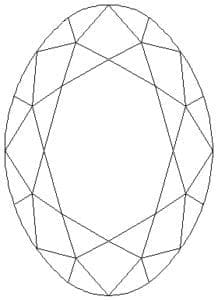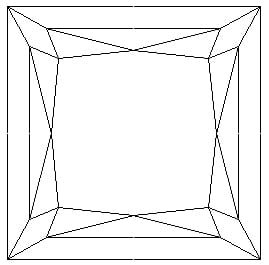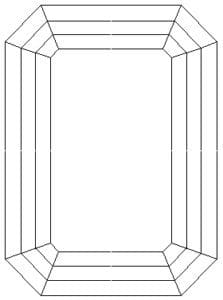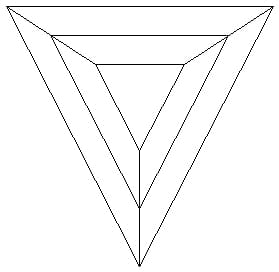

Diamond Cuts

Trilliant? Trielle? Triangular brilliant? Sometimes it can seem like gemstones and diamonds come in trillions of different shapes or cuts. We thought this brilliant diamond cuts cheat sheet might be helpful to provide you with some of the common terms used when talking about diamonds. Like Radiant Cut or Heart Shaped. When you actually start shopping – whether for an engagement ring, a milestone surprise, or just a little treat for yourself – We hope this guide will help you choose just the right gem.
We’re going to primarily consider diamond cuts, to keep things simple. However, all of these cuts may be applied to other gems with certain variations.
*A brief note about “shape” and “cut.” Shape describes the outline of the gem: a circle or square, for example. Cut, on the other hand, refers to the configuration of the facets, but also has to do with the style and quality of the gem cutter’s craftsmanship.
Round Brilliant Cut
When you think of a diamond, you’re probably picturing a round brilliant. This is by far the most popular and valuable cut of diamond out there. A round brilliant cut diamond has been fashioned with 58 facets in order to catch the maximum amount of light through its crown (the top of the diamond) and return that light to the viewer once it has been reflected several times within the gem. A round brilliant cut diamond is unsurpassed in both its brilliance and its dispersion or – fire”- of rainbow colors.
Oval Brilliant Cut
An oval brilliant cut diamond shares a similar faceting style to the round brilliant and therefore has similar fire and brilliance. Because of its elongated shape, ovals can appear larger than a round brilliant of equal carat weight.
Princess Cut
This was the cut of the ‘90s. Princess cuts with perfect proportions exhibit a great amount of brilliance, but beware those corners! This square cut diamond has 90-degree corners that are sharp and vulnerable to chipping. Since the gem should always be set in a way that protects it (especially when placed at the ring’s center), slightly beveled corners can reduce the risk of chipping and are not apparent once the diamond is set. Smaller princess cut diamonds are usually set in channels.
Cushion Cut
Until the 20th century, cushion cuts—or, as they were once known, old mine cuts—were the most popular and standard diamond. Something in between a round brilliant and princess shape, the cushion cut echoes the crystal form of the original diamond crystal. Cushion cuts have high brilliance and fire, and can have either square or rectangular proportions.
Emerald Cut
Also known as an octagonal step-cut, the emerald cut is created with a rectangular table (or “top facet”) and step-cut shapes as the gem’s top and bottom facets. A popular shape in the Roaring Twenties, the emerald cut’s faceting style creates a mirror-like appearance. Internal clarity is more important in step cuts, since their facets conceal fewer internal characteristics or imperfections. For similar reasons, diamonds with less color work better for emerald cuts—a “colorless” diamond is chemically pure and has no hue, while lower-graded diamonds have more of a yellow tint.
Radiant Cut
Relatively new to the scene, radiant cuts share the same outer shape as an emerald cut, but are cut with brilliant-style triangular or kite-like facets. Radiant cuts are a good choice if you love the looks of an emerald cut while preferring more sparkle in your diamond.
Marquise-shaped brilliant Cut
The story goes that this cut was developed for King Louis XV of France, who wished to evoke the lips of his mistress, the Marquise de Pompadour. The elongated, almost football-like shape and brilliant faceting of the marquise cut creates a dramatic look.
Pear-shaped brilliant cut
The elegant pear-shaped diamond combines elements of the round brilliant and the marquise. Its tapered end gives it the appearance of a pear, or a teardrop. It can offer an especially flattering shape as a pendant or necklace.
Triangular Brilliant Cut
Often used as side-gems, this diamond cut is triangular with slightly rounded sides and provides an attractive accent to the center gem. The terms trillion, trilliant, and trielle refer to slight variations in the configuration of this diamond’s facets.
Baguette Cut
Baguette cuts are also used as side or accents gems that are generally much smaller than the center gem. Available in straight or tapered variations—but also in exciting bullet or trapezoidal shapes—baguette cut diamonds are faceted with step cuts.
This is a lot of information to take in, and there are certainly more cuts available. We are always happy to answer your questions, show you examples and help you through your decision. Visit us in our showroom located in the heart of Freeport, Maine.













